LASERBLOCK
– May 29th, 2008
Jessica Bjermer has specialized in an interesting field within Interaction Desgin:toy design through laser-reflections with mirrors. Her last two projects have been dealing precisely with this subject and her results are just amazing.
Her first prototype (developed together with Jörgen Harre) was in essence some kind of bull’s-eye but with laser beams. Her final project is a two-player battle game where players compete to get to the red-colored target in the amount of reflections determined by a dice. The time the laser beam is running is controlled by an Arduino Diecimila. There are two types of pieces: the white ones have the ability of reflecting in 120 degrees angles, the black ones just 60 degrees.
You can download the poster explaining this game here (sorry only in Swedish, yet). All the materials shown are copyright by Jessica Bjermer, except for the second game shown in the next picture, where she shares authorship with Jörgen Harre.
Jessica’s stand at K3′s End Of Year show 2008, courtesy of the author
HEALTH AWARE ARDUPET
– May 29th, 2008
If a couple of days ago we saw a project about a duck capturing images and posting them to flickr, today is time to talk about Sparky, the oversized toy dog from the Interaction Design Master students at K3, Sweden.

Sparky in the lab, picture courtesy of the makers of the creature
Sparky is “A physical pet that reflects the quality of the lifestyle and environment that the ‘owner’ is living in. Sparky is a waist-high model made of plastic and wood that has the ability to lift and collapse it’s body, make whimpering, coughing, happy and musical noises depending on the quality of it’s health …”
There is a video showing the dog being carried around by different people in Malmo, Sweden. He will detect how polluted is the air, whether its carried is on the move or standing for too long, or if people are getting violent towards him.
The project is not very complex when it comes to the technology in use, but it is with no doubt tricky since it involves using a car battery to power up the engine keeping Sparky in place. The absolute genius of this dog is how it is controlled. One single motor will move the whole structure. I wonder how much the mechanics have been inspired by the classic toy Sampo (first made in 1945) by the Swedish brand Brio.

Sampo, toy and picture copyright by Brio.se
LURMUSIC A LA ARDUINO
– May 28th, 2008
Erik Rask and Mika Forsling aka Lurmusic are couple of musicians from Malmo, Sweden, working with interactive performance. They are known for their electronica shows where they combine projections that react to the music. Their latest project includes one Arduino board, the Tinker.it software to communicate to Flash and a shield designed by K3-alumni Markus Appelbackaka Sensonica.org.
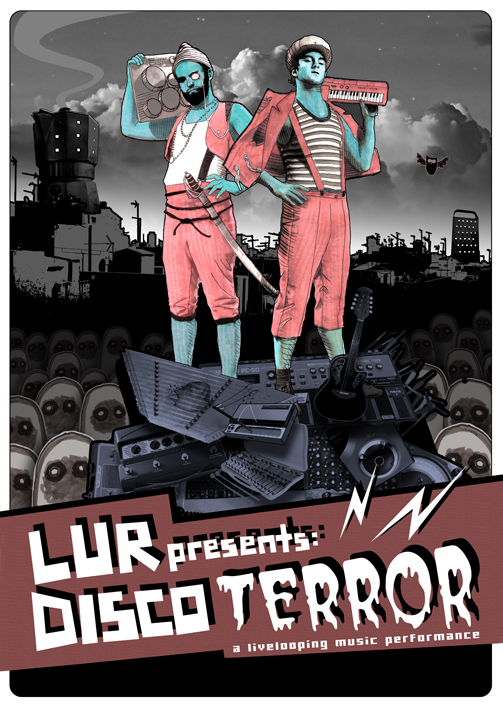
You can check their videos on Youtube and Myspace. Here a 7min teaser with some priceless moments like the way the guys enter the stage:
This video is part of a collection of 4 that show their 35 minutes long performance. Lur, in their red overalls, loop through different instruments proving their skills in crafting graphics, sound, and dance!
Note: today Erik Rask got his BA. in Stage Technology at K3 through his work with Lur, congratulations Erik!!
ARDUINO NANO: ALL-IN-ONE DESIGN FOR BREADBOARD USE
– May 15th, 2008
The new Arduino Nano is the smallest and most versatile Arduino board yet. Designed and manufactured by US-based Gravitech, it has all the functionality of an Arduino Diecimila in a compact, breadboard-ready design. The Nano includes an ATmega168 microcontroller (w/ bootloader), integrated USB (FTDI chip) w/ Mini-B jack, a full complement of i/o pins (including two more analog inputs than the Diecimila), an ICSP programming header, and on-board regulator. Measuring 0.73″ x 1.70″, it’s smaller and cheaper than the combination of Arduino Mini and Mini-USB adapter, and you can get started without any wires. We’re excited to be offering this new, breadboard-ready form factor with the integrated convenience of the Arduino Diecimila.
The Arduino Nano is available for pre-order. Order now and get 10% off; boards will ship on the 16th of June.
ARDUPILOT AND OTHER ARDUINO-BASED DIY DRONES PROJECTS.
– May 13th, 2008
Chris Anderson, editor-in-chief of Wired Magazine, has a write-up of theArduPilot autopilot system and other Arduino-related discussions on his DIY Drones blog. The ArduPilot is billed as “the world’s cheapest autopilot”: a $110 system including PCB, GPS, and related components for piloting a hobby plane. DIY Drones is an amazing group creating all kinds of Unmanned Aerial Vehicles (UAVs). And, of course, publishing source code and Eagle files as they do.
Posts that may be of interest to Arduino users include: the BlimpDuino autonomous blimp controller board (and demo video), Arduino vs. Basic Stamp(and Propeller).
THE BIG APPLE COULD AS WELL BE A PAPAYA
– May 10th, 2008
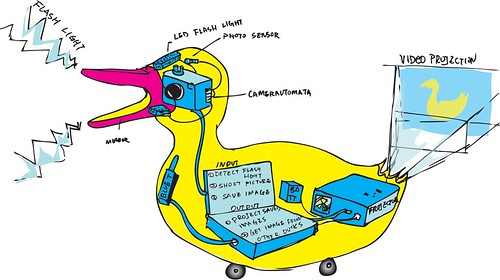
Drawing of the image-defecating duck from Camerautomata.org, image (c) of the authors
I wish I was in NYC this week, a lot is happening there. My friend Asintomaticwho’s been living in Manhattan for a year reported about a project presented atEyebeam called Camerautomata. It is a duck that will give you the evil eye, take a pic of you and post it to flickr. This fellow is a -and I quote literally- ‘Magical Image Digesting Robotic Duck’. Charlie, the duck, is a participatory ‘Image- Technology’ for photographic intervention in public spaces. The project explores the system in which digital images are produced and consumed in urban space as well as information space. Where as the conventional image technology (ex:cameras) isolate people(ex.tourists) from their immediate environment, ‘Camerautomata’ brings strangers together by the act of photographing. The duck digests and defecates the photograph and also posts on his flickr site via WIFI. The duck is a eclectic collage of hacking automatic electronics (digital camera/ portable printer/ motorized decoy/ roomba/ etc) and controlled by a microprocessor…

Picture of the Duck by Asintomatic, (c) of the author
According to my friend, the microprocessor part of the description is an Arduino board. And it is just that in NYC Arduino is hot, and not hot like in “this is burning my USB port” kinda hot. But there are a lot of projects being made and presented having “Arduino inside”. I bet that the ITP show this year will have some of those. If you have the time, pass by ITP on May 12th and 13th. There is always good stuff coming out of that school.
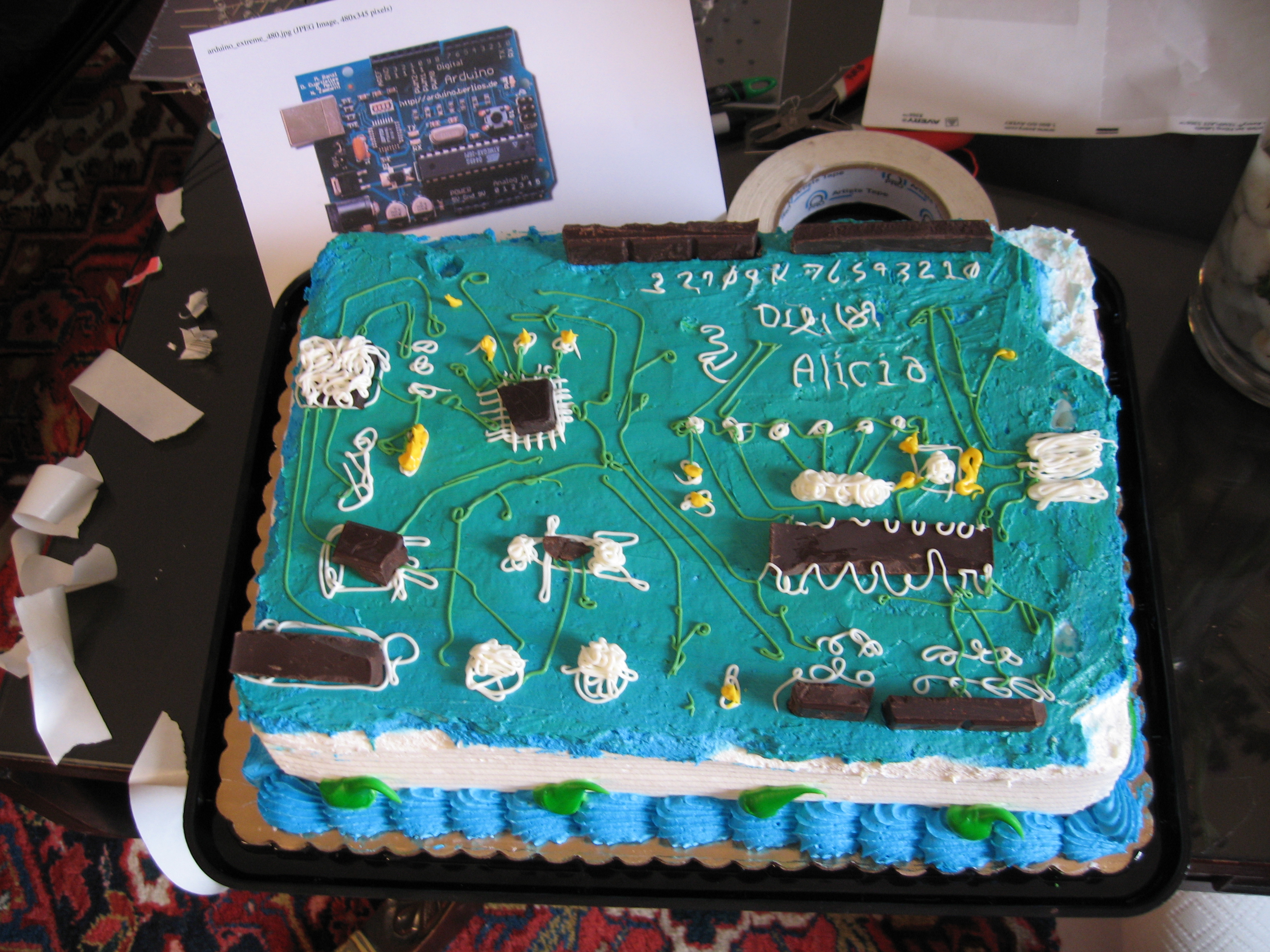
Image by NYCresitor, (c) of the authors
I opened the post talking about Papaya, but I actually wanted to write about the Arduino cake from NYCresistor: There was a fight over the AVR chip (dark chocolate) which involved memory loss and a cake knife. Candles became wire sticking out of the pins. Seriously awesome. Next task: to make LED candles that you have to short out instead of blow out.
NYCresistor is a collective in Brooklyn that will offer a whole bunch of workshops, arrange events and -why not- explore the boundaries between electronics and food. I still wonder how Paola aka Asintomatic got to find them …
ARDUINO AT THE MAKER FAIRE
– May 8th, 2008
We didn’t have a booth of our own, but Arduino was still well-represented at the Maker Faire in the Bay Area. There were lots of cool projects using Arduino, like the Stribe multi-touch controller and Becky Stern’s LilyPad embroidery (previously featured on our blog). There were also a variety of Arduino and Arduino-compatible products for sale, like the ones being admired (?) by the man in the picture above. Check out some more pictures and videos from the fair.
PEGGY 2.0: A 25×25 LED MATRIX PROGRAMMED WITH ARDUINO
– May 8th, 2008
Peggy 2.0 is a multiplexed matrix display of 25 by 25 LEDs from Evil Mad Scientist Laboratories. This version comes with an ATmega168 loaded with the Arduino bootloader, and can be programmed directly from the Arduino environment using a USB-to-TTL cable. The programming Peggy 2.0 page has more details and example Arduino sketches. You can buy a kit from the Evil Mad Science store.
Projects like this help demonstrate the value of open-source hardware. One of our motivations for opening the Arduino software and hardware was to make it easier for people to build cool projects like Peggy. If you’ve got an idea for a project of your own, check out the Arduino hardware page for the board designs and the hacking section of the site for information on extending and modifying the platform.
WE HAVE BEEN (KIND OF) SLASHDOTTED!!
– May 4th, 2008
Check this article on Slashdot … it is just a brief comment when talking about yet another hardware project based on an ARM platform … but WE HAVE BEEN (KIND OF) SLASHDOTTED!! 
ARDUINO ON LINUX FORMAT
– May 3rd, 2008
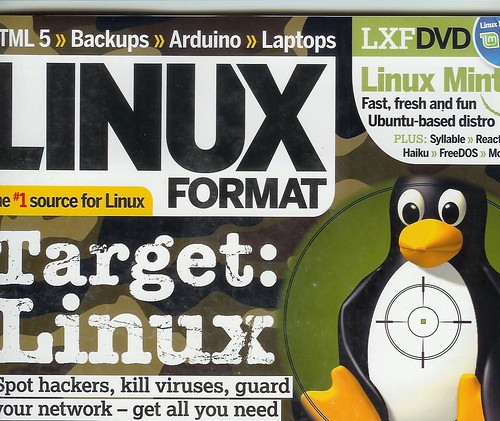
Cover to Linux Format #105
Imagine my surprise when looking for the latest edition of 2600 at my local magazine store and suddenly seeing the word “Arduino” at one of the headers of the magazines on the shelf. This happened just a month ago, it was Linux Format, one of the UK classics in reviewing distros, new OS software, etc.
Graham Morrison is writing a series of articles on how to build some stuff based in the use of Arduino. In their issue #100 Paul Hudson, LF’s editor, made this article on how to get started with Arduino on Linux. Must say that the first time I ran an Arduino workshop on purely the Linux platform was at Riereta in Barcelona in February 2006. During 5 endless nights I learned in my own flesh about the problems behind having 14 people accounting 8 different distros at once. Some people spent two nights just figuring out how to install Java in their machines (at the time, Sun’s Java was still not GPL’ed, it wouldn’t be until November’06).
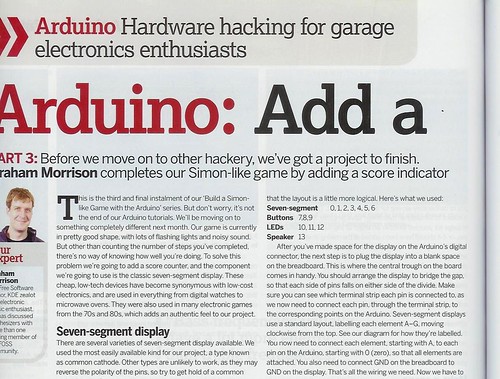
First page of the article by Graham Morrison on Linux Format #105
I believe that the effort made since that workshop by all of us -the community of users and developers- has made possible that a general purpose journal likeLinux Format started publishing articles on hardware hacking concentrating in the use of Arduino. Thanks guys, keep the good work, we like your style.
Do you know about other publications or books showing some Arduino related materials? You can send us some links and -if you are editing them- prints to review.








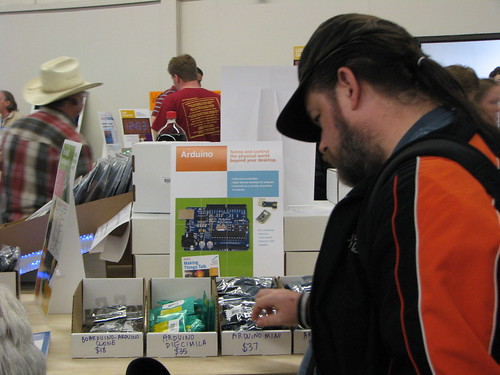
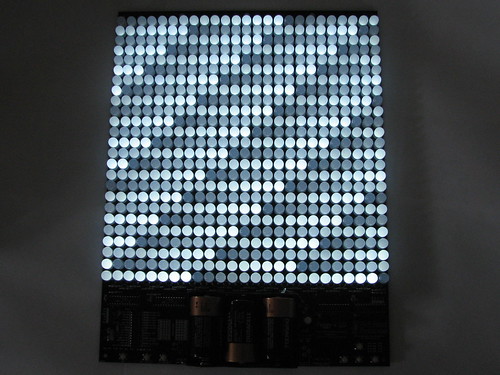






0 comentarios:
Publicar un comentario